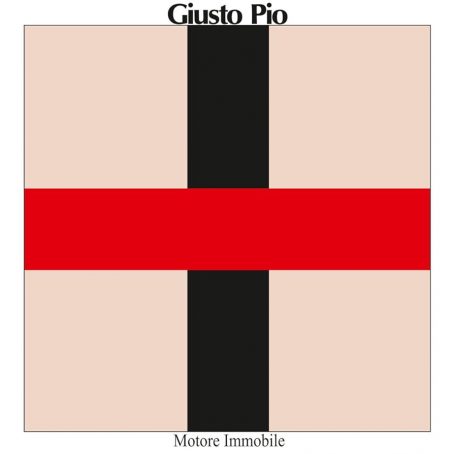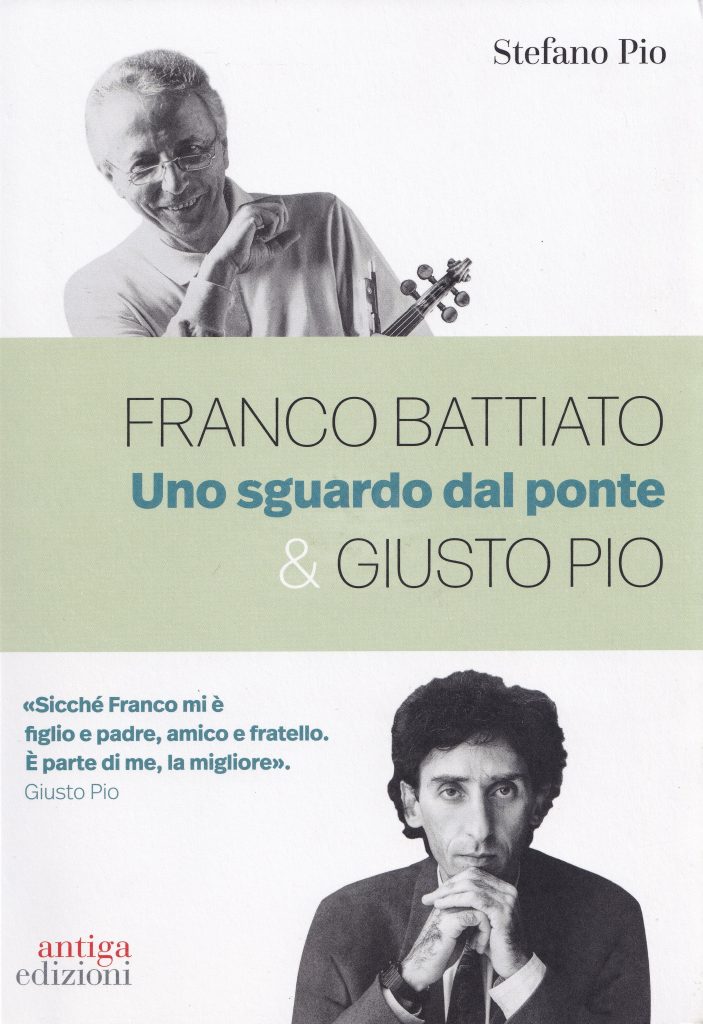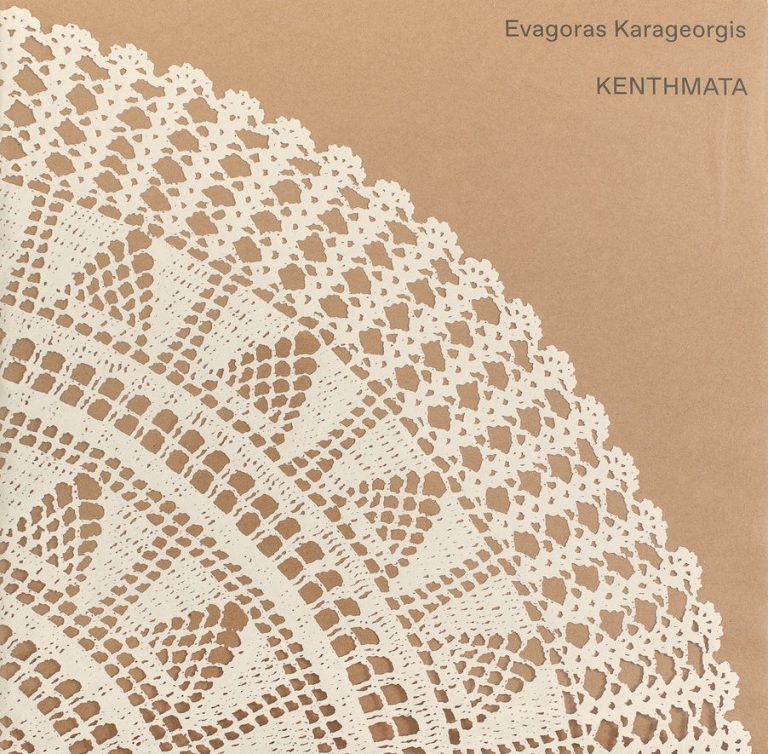
Giusto Pio’s Motore Immobile began to gain wider recognition when Alan Licht included it in the third instalment of his Minimalist Lists in 2007. Originally released in 1979 and reissued by Soave only in 2017, the album has since earned its place as a classic of Italian Minimalism.
Of course, it’s still a very obscure affair, with Giusto Pio, who untimely passed away shortly after Motore Immobile was reissued, far from being a household name, especially outside Italy. In the Bel Paese he is mostly remembered, sometimes reductively, as the violinist who collaborated with prog-master turned-pop icon Franco Battiato. Yet Pio was far more than a supporting player: he was instrumental in shaping Battiato’s avant-pop sound, while Battiato, in turn, encouraged the classically trained Pio – then an established orchestral musician – to explore experimental music and publish his first solo LP, Motore Immobile.
New insights into the creation of the record have emerged in the recently published Franco Battiato & Giusto Pio. Uno sguardo dal ponte [A View from the Bridge] by Stefano Pio. Stefano, Giusto Pio’s son and a musician himself, wrote the book to explore the collaboration and friendship between the two artists, giving his father the recognition he deserves for his often-overlooked role in Battiato’s music.
Uno sguardo dal ponte is a treasure trove of information, filled with personal memories, first-hand anecdotes, and extensive excerpts from a previously unpublished interview Giusto Pio gave for a biography that never saw the light of the day. Below you can read an extract from the chapter on Motore Immobile, in which Stefano Pio explores the record’s genesis and significance and shares Giusto’s personal reflections on it.

In 1978, Franco jokingly agreed with Pio that he would only continue to collaborate with him if he composed and released an experimental album of his own. Pio accepted on the condition that, given his active involvement in the project, Franco would be credited at least as producer.
And that’s how Motore Immobile was born. Written for two electric organs, one voice, and one violin, it was composed in 1978 alongside L’Egitto Prima delle Sabbie, but its release was delayed until 1979 to avoid having the two records hit the market too close together. It is Franco who sings on Motore Immobile, although he is credited as Martin Kleist. He chose to use a pseudonym because he was concerned that Pio, a contemporary composer releasing his debut album, might be overshadowed by his involvement.
[Franco] wanted Pio to be recognized as an independent experimental composer. However, listening to the record reveals that the composition is clearly the result of their close collaboration. As for the similarities between these albums, I invite you to listen to the piece L’Egitto prima delle sabbie and to Ananta (from Motore Immobile) in close sequence, to observe how their sonic form and underlying musical idea are unique, yet shared in both compositions.
Initially, Franco had offered the vocal part to Demetrio Stratos [avant-garde singer and vocalist of prog group Area], who declined due to health issues after the first rehearsal: the prolonged sound emission required by the piece was too exhausting for him. Sadly, Stratos’s health deteriorated, and he died on June 13, 1979.
I remember that Franco, by contrast, was in great shape and could produce a diphonic sound using a vocal technique employed by Mongolian populations, which enables the simultaneous emission of a sound and its harmonic. And so he decided to perform the vocals in place of Demetrio (…).
Giusto Pio recalls:
Battiato encouraged me to publish my first record, which was experimental music. Its title was Motore Immobile [Prime Mover], with fixed, continuous, unchanging sounds. It consists of two tracks: the first is ‘Motore Immobile’ for two organs, voice, and violin, while the second, ‘Ananta’, is for piano and organ. I was asked about the meaning of the title. I replied that one might picture a large wheel turning, and in the middle of this wheel there is a point at the center, the point has no dimensions and therefore, while everything revolves, it itself remains motionless. Later we also recorded another, unreleased album, with a piece titled ‘Rappel’ [‘Rappel’ was reissued by Miraloop in 2024, as part of Pio’s compilation Kum – Percorsi Intrecciati con Franco Battiato]. Both works may be considered as post-avant-garde, as experimental search for new sounds.
Motore Immobile was presented at the Out Off Theatre in Milan on October 14, 1978, with Franco [Battiato], Danilo Lorenzini and Michele Fedrigotti on organ, and Pio on violin, and again, with the same musicians, on April 7, 1979, at the Teatrino of Villa Reale in Monza.
My father explains the project:
I imagine the rotating mechanisms of an engine: as one moves from the periphery toward the center, toward the axle of the wheel, the movement gradually diminishes. (…) In this way, as we move toward the center of a sound, the feeling of motion fades, until from the utmost stillness the greatest energy is set free.
In the notes on the score, my father wrote:
The violinist must face the singer, with his back to the audience. The voice should be male, as soft as possible, unforced and steady, without vibrato, yet audible throughout the hall. It should blend imperceptibly into the organ’s chords. The ppp [pianopianissimo] organ’s volume should be the same as the vibrations of the piano strings four or five seconds after the production of the sound.
And on ‘Ananta’ he wrote:
To achieve a perfect fusion between piano and organ, the organ’s speakers must be placed beneath the piano or as close to it as possible.
The term Ananta (Sanskrit: अनन्त) deserves particular attention, with its various meanings (“without end,” but also “eternal” or “infinite”) all pointing to the non-dual reality. In Vedanta, the term Ananta, as used in the phrase “Anadi (without beginning) Ananta (without end) Akhanda (unbroken) Satcitananda (being-consciousness-bliss)”, refers to the Infinite, conceived as a singular, non-dual reality. (…)
While jotting down these short notes, I suddenly became aware of the connection between the record, Franco, Pio, and Father Bede Griffith’s Saccidananda Ashram. Father Bede Griffith was a Benedictine monk who journeyed to Kathmandu to study Shivaism in the 1950s and later attempted a synthesis between the Christian monastic experience and Hindu sannyāsa. He founded the Saccidananda Ashram in Kulittalai, Tamil Nadu (southern India), whose logo resembles the [Motore Immobile] album cover. (…)

In the following excerpt from the extended interview my father gave to Zanellato1, one can see how, for Pio and Battiato, spiritual and musical exploration were one and the same:
Both Ananta and Rappel are terms found in the Eastern philosophical-esoteric teachings of Greek-Armenian mystic Georges Ivanovic Gurdjieff, in relation to his views on life, the soul, and the universe. With Franco, I attended Thomasson’s sessions, who came to Milan from France to hold meetings, conferences, and meditation exercises essentially aimed at introspection (…). It’s a process that should lead to a different perception of the world, emotional control and an inner peace which borders on mystical asceticism. I believe this can be achieved after a long, demanding apprenticeship and with willpower (“I want to be myself”). I wasn’t able to push myself that far, but perhaps I came close enough to get a sense of that state of awareness and harmony with oneself and the universe.
I would like to express my heartfelt thanks to Stefano Pio for kindly granting me permission to translate and reproduce extracts from his book. The text above is taken from Stefano Pio, Franco Battiato & Giusto Pio. Uno sguardo dal ponte, Antiga Edizioni, Treviso 2023, pp. 81-85.
- Excerpts from this interview were included in Dedicato a Giusto Pio. Dolomiti Suite [Dedicated to Giusto Pio. Dolomiti Suite], a biographical book edited by journalist Angelo Zanellato and published in 2010. ↩︎


